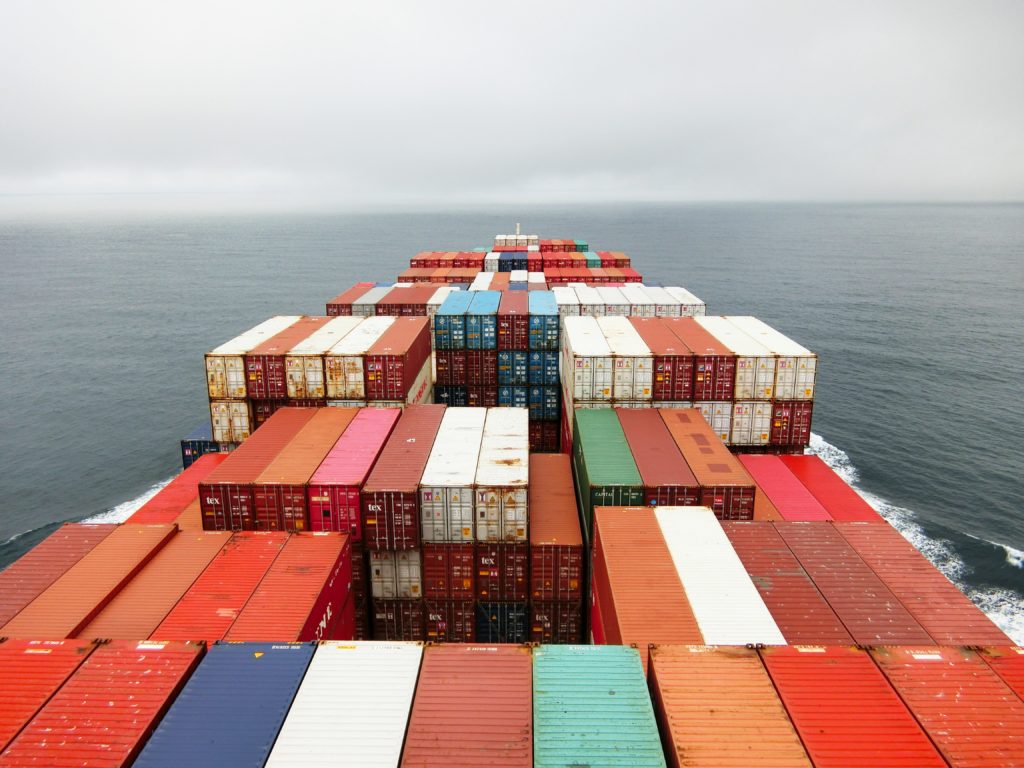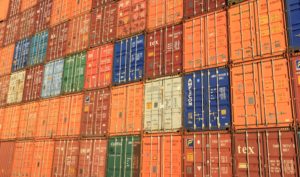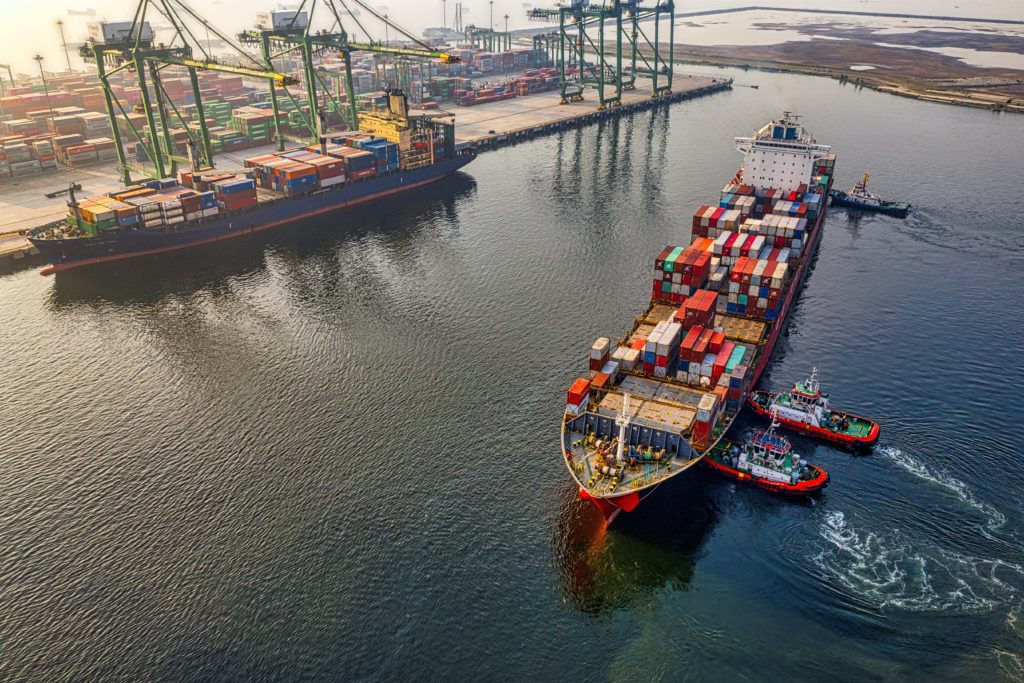- Why is switching from air to sea freight important?
- Why is sea freight a key issue for the aid sector?
- What is the solution to decarbonise your transport system?
- Key implementation points
- Points of attention
- Key facts
- Key actions
- To consider
- Success stories
- Tools and good practices
- To go further
- Sources
Why is switching from air to sea freight important?
Freight is responsible for about 10% of global greenhouse gas emissions (1). Air travel is by far the most polluting mode per tonne transported (1,054 gCO2/tonne-km). By contrast, maritime transport emits one of the lowest amounts of CO2 (19 gCO2/tonne-km), even if the quality of the fuel used often causes serious local pollution problems (2). If done carefully, the shift from air to sea can significantly reduce freight emissions without compromising deliveries.
Why is sea freight a key issue for the aid sector?
International aid organisations frequently use aircraft to transport goods to the field. The use of international air transport by humanitarian organisations is necessary in certain circumstances, such as to respond quickly to emergencies, or to transport sensitive items and perishable goods. However, it can be kept to a minimum. There are many cases where it is possible to transport certain goods by sea, without compromising the mission of aid organisations.
What is the solution to decarbonise your transport system?
Organise sea transport instead of air transport for as many goods and in as many cases as possible. Using sea freight more systematically not only reduces greenhouse gas emissions, but also makes significant financial savings.

Key implementation points
There are several ways to increase an organisation’s share of sea freight. Accurate and contextualised annual international order planning and detailed knowledge of each stage of the order are key elements of change.
The planning work should be carried out in close collaboration with users of the goods ordered and procurement managers. Decentralising storage sites and developing regional logistics hubs as close as possible to project sites reduces transport times and distances, and also encourages local purchasing.
Points of attention
-
Although it emits far less greenhouse gas per ton transported than air freight, sea freight was responsible for around 3% of global emissions before the Covid-19 pandemic (3), mainly due to the use of heavy fuel oil. The sector is undergoing a transformation and aiming to reduce emissions. The International Maritime Organisation (IMO) has set a target of 40% reduction in greenhouse gases by 2030 and 50% reduction by 2050 compared to 2008. (4) To achieve this goal, technological innovations and alternative fuels are already available, and others are being studied or tested. It is therefore possible for an international organisation to choose eco-responsible shipping companies committed to emission reduction policies. (5)
-
Is sea freight really that slow?
Maritime transport has a reputation for being slow. It is often not used for this reason. However, when you consider the entire supply chain, from initial order to receipt of goods on the ground, shipping by sea can take the same amount of time as (if not less than) shipping by air. Tax clearance and pre-clearance formalities can be done during the ship’s voyage and completed when the ship arrives in port. For air freight however, all procedures must be completed before the aircraft departs so that any sensitive goods can be properly stored upon arrival at their destination. Where clearance and pre-clearance procedures are lengthy (sometimes up to eight weeks), it is common to find that sea freight does not take longer than air freight.
Key actions
-
#1 Plan annually
Establish an annual planning of the orders, taking into account the supply times calculated according to the specificities of the articles and the contexts.
-
#2 Increase regional storage capacity
Develop regional warehouses and logistics centres to store goods near projects, especially items sourced directly from suppliers, to minimise distances and optimise the supply chain.
-
#3 Purchase locally
Give preference to local or regional purchases of equal quality.
-
#4 Choose transport companies carefully
Choose more environmentally-responsible transport companies, using alternative fuels and/or technological innovations which respect the current regulation on the maximum sulphur content of 0.5% in the fuel of ships (International Maritime Organisation).
-
#5 Use reefer containers
Use reefer containers for temperature-controlled cargo.
To consider
-
Potential co-benefits
- Reduction of transportation costs
- Better order and supply chain management
-
Success conditions
- Close collaboration between actors involved in the ordering process
- Precise estimation of each step of the procurement process, considering the life cycle of the products, administrative and customs formalities, pre- and post-shipment times, etc.
- Choice of transport company based on environmental criteria
-
Prerequisites & specificities
- Orders that are critical to emergency operations requiring a quick response and short-lived or sensitive items require air transport
-
Potential risks
- Fuel oil used as fuel by ships causes significant air pollution (sulfur dioxide emissions) and water pollution (acidification) due to discharges, degassing at sea and shipwrecks
Tools and good practices
-
Freight Emission calculator
Freight Emission calculator for greenhouse gases and exhaust emissions
Check here -
Ranking of cargo companies
A review of sustainability reports of cargo companies
Check here -
Ranking of cargo companies
EU shipping's climate record - Transport & Environment Report (Table 4, p12)
Check here
To go further
-
FRET21 & ADEME initiative: FRET21 (for shippers), Objectifs CO2 (for carriers) and EV.com (for freight forwarders)
Read here -
Video presentation - ADEME & FRET21: freight in the era of decarbonisation (FR)
Watch here -
Guide to the drafting of specifications for transporters – ADEME (FR)
Read here -
Global transport: CO2 emissions on the rise, planète-energies, 2020 (FR)
Read here -
Sustainable Shipping Initiative: The Sustainable Shipping Initiative is a multi-stakeholder collective of ambitious and like-minded leaders, driving change through cross-sectoral collaboration to contribute to – and thrive in – a more sustainable maritime industry
Read here
Freight

Transport

How MSF France reduced its carbon footprint by switching to sea freight
Sources
(1) Centre d’analyse strategique de la RF – Comment le fret mondial peut-il réduire son empreinte écologique ? 2010. Read here
(2) Centre d’analyse strategique de la RF – Comment le fret mondial peut-il réduire son empreinte écologique ? 2010. Read here
(3) ICCT – Greenhouse gas emissions from global shipping, 2013-2015. Read here
(4) OMI – Réduire les émissions de gaz à effet de serre provenant des navires. Read here
(5) ICCT – Greenhouse gas emissions from global shipping, 2013-2015. Read here
(6) Vie Publique – Le fret mondial et le changement climatique, 2010. Read here
(7) Universal Cargo – Air Freight Vs. Ocean Shipping 8 Round Fight – Which Will Win Your Cargo? 2016. Read here
(8)”How MSF France reduced its carbon footprint by switching to sea freight”. Read here
(9) ALIMA – Maritime freight factsheet – ALI_TR_001 – 07/2021 – v1
Cover photo © William William/Unsplash.
